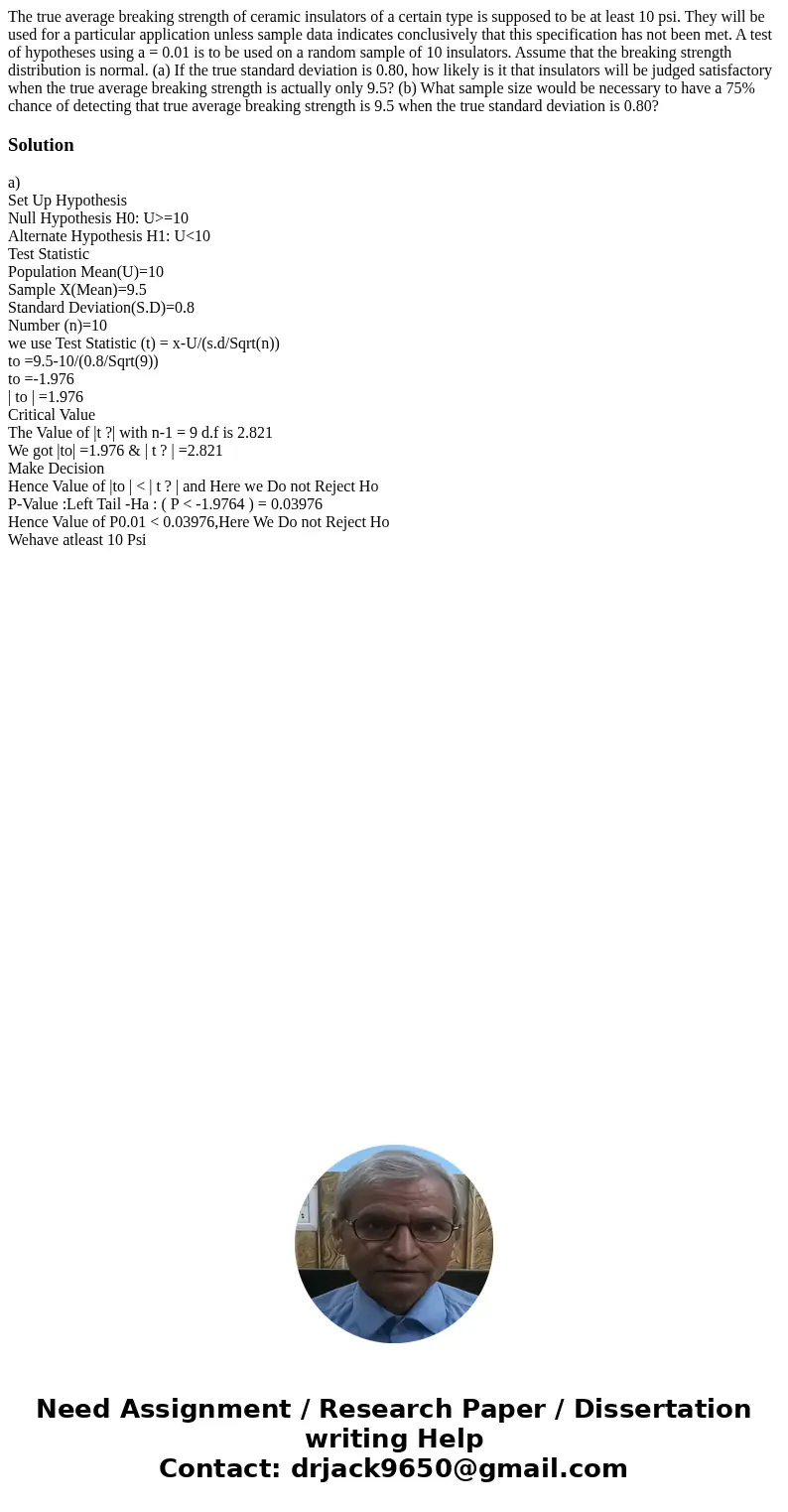The true average breaking strength of ceramic insulators of
The true average breaking strength of ceramic insulators of a certain type is supposed to be at least 10 psi. They will be used for a particular application unless sample data indicates conclusively that this specification has not been met. A test of hypotheses using a = 0.01 is to be used on a random sample of 10 insulators. Assume that the breaking strength distribution is normal. (a) If the true standard deviation is 0.80, how likely is it that insulators will be judged satisfactory when the true average breaking strength is actually only 9.5? (b) What sample size would be necessary to have a 75% chance of detecting that true average breaking strength is 9.5 when the true standard deviation is 0.80? 
Solution
a)
Set Up Hypothesis
Null Hypothesis H0: U>=10
Alternate Hypothesis H1: U<10
Test Statistic
Population Mean(U)=10
Sample X(Mean)=9.5
Standard Deviation(S.D)=0.8
Number (n)=10
we use Test Statistic (t) = x-U/(s.d/Sqrt(n))
to =9.5-10/(0.8/Sqrt(9))
to =-1.976
| to | =1.976
Critical Value
The Value of |t ?| with n-1 = 9 d.f is 2.821
We got |to| =1.976 & | t ? | =2.821
Make Decision
Hence Value of |to | < | t ? | and Here we Do not Reject Ho
P-Value :Left Tail -Ha : ( P < -1.9764 ) = 0.03976
Hence Value of P0.01 < 0.03976,Here We Do not Reject Ho
Wehave atleast 10 Psi

 Homework Sourse
Homework Sourse